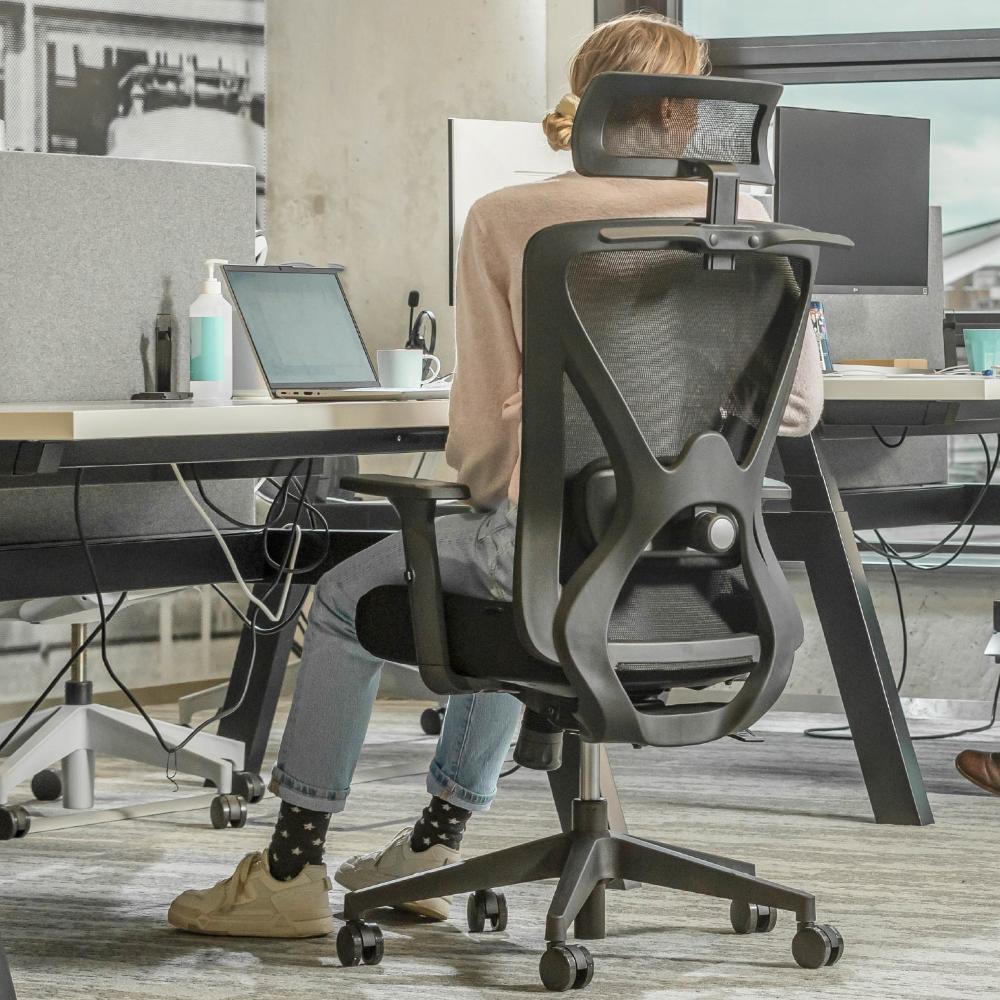Standard Bureau Dimensions: The Right Fit For Your Workspace
Share
Choosing the right desk dimensions is essential for an ergonomic and efficient workspace. Whether you work from home or in the office, a good desk ensures a comfortable and productive work environment. In this guide, we discuss optimal desk sizes, workplace ergonomics, and why adjustable desks, such as the Backerz Electric Sit-Stand Desk, are a smart choice.
Why Are Desk Dimensions Important for Ergonomics?
Ergonomics plays a crucial role in work comfort and productivity. A desk with the right dimensions promotes natural movements, reduces physical strain, and improves focus.
Encourage Natural Movements
A well-sized desk provides enough space to easily change posture and prevents stiffness. The right width and depth ensure your work materials are within reach and you can move comfortably.
Reduce Physical Strain
The height, legroom, and surface area of the desk all contribute to reducing strain on your back, neck, and wrists. Choosing the right dimensions helps prevent long-term complaints.
Increase Focus and Productivity
A tidy and spacious desk helps minimize distractions. The right dimensions ensure everything you need is within reach without unnecessary clutter.
Standard Desk Sizes for Workspaces
Desks come in various sizes, but the standard dimensions below provide a good basis for comfort and functionality.
Work surface
-
Small desks: 120 cm x 60 cm – Suitable for laptops and a minimalist workspace.
-
Medium desks: 140 cm x 70 cm – Ideal for dual monitors and extra accessories.
-
Large desks: 160 cm x 80 cm – Perfect for an extensive workspace.

Desk Height
The standard desk height is between 72 and 76 cm. This ensures an ergonomic sitting posture where your elbows form a 90-degree angle while typing.
Legroom and Free Space
A comfortable desk should provide at least 60 cm of legroom in width and 65 cm in height to properly accommodate most office chairs.
Adjustable Sit-Stand Desks and Their Benefits
Adjustable desks offer flexibility for users who alternate between sitting and standing. An excellent example is the Backerz Sit-Stand Electric Desk, which lets you set the height as you wish.
Adjustable Height
Most adjustable desks have a height range from 72 to 120 cm, allowing users to easily switch between sitting and standing.
Stability and Load Capacity
Adjustable desks must be able to support at least 44 kg, so they provide sufficient support for multiple monitors and other office supplies.
How to Choose the Right Desk Dimensions?
-
Ergonomics: Make sure your desk height corresponds to a correct posture.
-
Legroom: Leave enough space under the desk to move comfortably.
-
Work surface: Choose a size that fits your work essentials without unnecessary clutter.

Conclusion
Choosing the right desk dimensions is essential for comfort and productivity. Whether you choose a standard desk or an adjustable model like the Backerz Sit-Stand Electric Desk, ergonomics and a well-organized workspace improve your work experience and well-being.
Frequently Asked Questions (FAQ)
What is the best height for a desk when using an office chair?
The best height is when your arms rest on the desktop at a 90-degree angle while your feet are flat on the floor. Usually, this is between 72–76 cm, but it can vary based on your height and chair settings.
How do I know if my desk is ergonomic?
An ergonomic desk:
-
Fits your body height
-
Allows your elbows and wrists to rest relaxed
-
Provides enough legroom
-
Preferably adjustable to alternate between sitting and standing
Which desk is suitable for working from home?
For working from home, a desk of at least 120 cm wide is recommended, so you have enough space for a laptop, monitor, and accessories. Adjustable sit-stand desks are ideal for flexibility and comfort.
Is a sit-stand desk good for back pain?
Yes, regularly alternating between sitting and standing with a sit-stand desk reduces strain on the back and can help prevent or relieve complaints during prolonged desk work.
How far should my monitor be from me?
For an ergonomic working posture, your monitor should be about 50 to 70 cm from your eyes, roughly an arm's length away. The top of the screen should be at or slightly below eye level.

